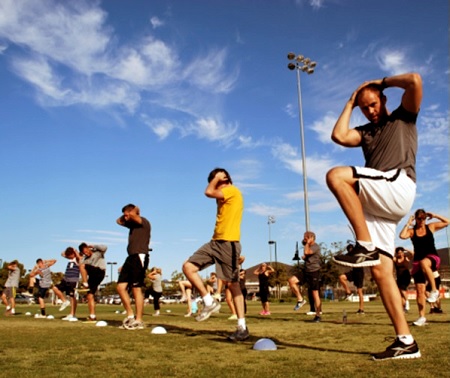
IT TAKES WORK.
After I left active duty in the Marine Corps, one of the qualifications I obtained was to become a certified fitness instructor. This was keeping with my philosophy that a happy, healthy life involves a well-rounded focus on physical, mental and spiritual health. In the military, service members stay in shape with staple exercises such as pushups, sit-ups, pull-ups and running. The stay-in-shape philosophy will also serve you well after you leave the service.
The mental challenges that arise through day-to-day living become easier to deal with when you are in good physical shape. It is much easier to succumb to mental fatigue when your body is already worn out. It may seem that 20 or 30 minutes of time spent exercising could be better used doing something else. But the gains you make in efficiency for the rest of your day more than offsets the time you invested in working out.
My Goal is to Provide Advice for Working Out
Discovering my passion for health and fitness was very important in my life. Not only did it enable me to perform my duties in the Marine Corps, it also facilitated my career after leaving the military. Over time, my goal is provide you with practical advice for maintaining good health. I’ll endeavor to post regularly here and on various social networks. In this article, I’ll briefly touch on the question of nutrition.
(Scroll down to read more.)
Advertisement (Marine Corps Boot Camp Film Series)
For more information, visit www.DarkDawnMovie.com.
Nutrition Matters
A pervasive myth inherent to physical fitness is that if someone exercises long and hard enough, they can eat whatever they want and remain healthy. Granted, there are many examples where it appears that a person gets away with eating poorly, however, your mission is to achieve peak performance during training.
Even if you are in good cardiovascular shape, if you are carrying an extra five or ten pounds of fat on your body as a result of a poor diet, it is not possible to achieve your peak performance level, and you will feel the effects when you most need to access your body’s energy reserves. Your goal should be to achieve as much strength, leanness, and cardiovascular fitness as safely and healthily as possible.
Slow Transformation Develops Long Term Habits
If your diet is currently very unhealthy, it is best not to transform it overnight. Changing your diet “cold turkey” will likely lead to significant withdrawal symptoms and cravings, and in short order the temptation to eat junk food and sugar will emerge with a vengeance.
Instead, your goal should be to change one bad habit at a time. For example, if you eat three unhealthy meals a day and cookies in between for snacks, start by swapping out one of your unhealthy snacks for some fruit. That should be your only change for a few weeks until such time arrives when grabbing fruit becomes second nature.
Once that first snack is permanently altered, next consider adjusting breakfast. Substitute unhealthy cereal with a whole-wheat based brand of cereal. Now you have two good habits per day, even though the rest of your diet is unhealthy. Keep this process going, where you swap out one bad habit at a time, until you have reached an optimum diet. This is much more preferable to changing everything at once, which may work for a few days, but will most likely result in a relapse soon after. By ensuring that good eating habits form one change at a time, you will soon find that your entire diet is healthy without having felt many withdrawal symptoms.
(Scroll down to read more.)
You can aim for a daily intake of 2000 calories and adjust your caloric levels accordingly depending on the amount of exercise you are doing and how much weight you are losing (or gaining). If you have to lose significant amounts of weight, do not starve yourself. Starvation diets are unhealthy and can lead to medical problems. Instead, start with a normal caloric intake and make small corrections as necessary. As your body gets used to healthy eating and exercise, it should become easier to determine how to adjust your diet and exercise regimen.
Spacing meals evenly throughout the day is ideal to help your blood sugar level to remain constant and so that you have few insulin spikes (insulin is known to help the body store fat). Eating large meals or copious amounts of sugar causes the pancreas to produce more insulin than eating smaller, healthier meals. By spacing out small meals throughout the day, insulin generally remains at a constant level and your body is less inclined to retain fat.
You should drink sufficient amounts of water. Usually eight to ten glasses of water per day is recommended, however this number varies depending on several factors including your exercise level and food intake, the climate and altitude in which you live, and your body weight. You can consult many on-line resources to determine how much water to drink per day. However, eight to ten glasses is usually a good rule of thumb.
Think Long Term
Adopting a mentality of slow-and-steady instead of seeking immediate results will increase your chances of getting in shape and staying in shape. If you’ve been healthy for a long time, then stay on the same general path you’ve been on. But if you’re out of shape, starting a new fitness and nutrition regimen should be with an eye to the long term, not a crash course.
Stay healthy and be happy!







